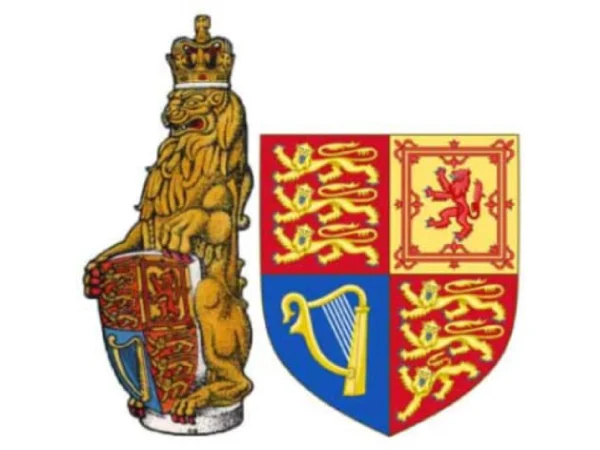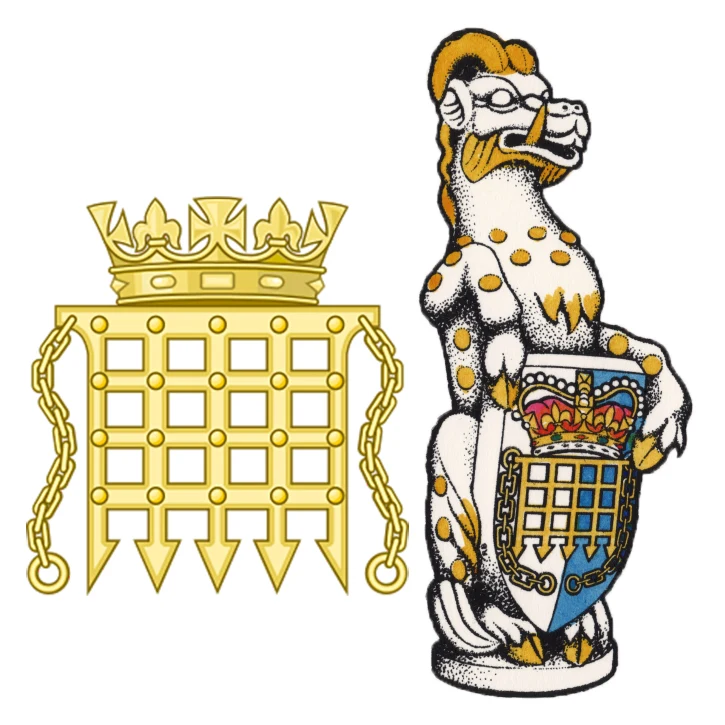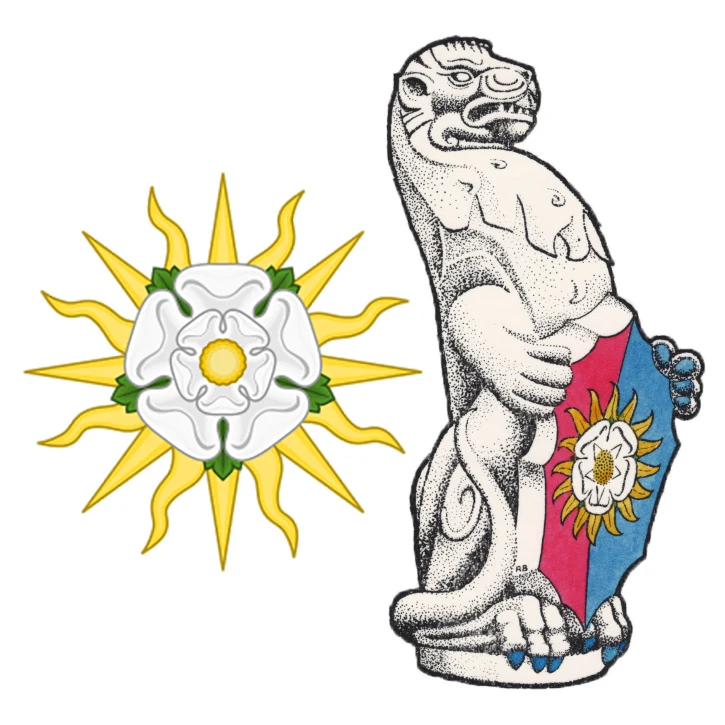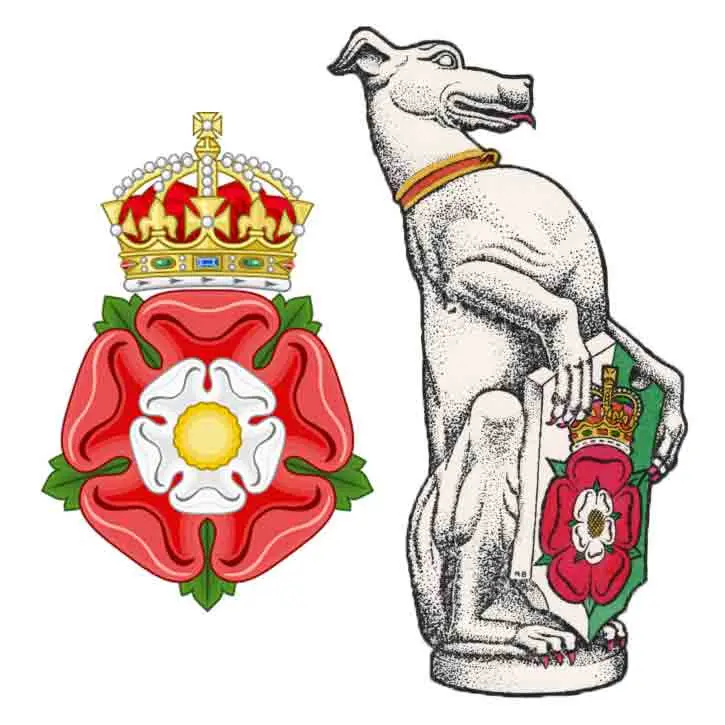
At the coronation of Queen Elizabeth II in 1953, a set of plaster statues representing 10 heraldic beasts stood guard. Each statue consists of an animal supporting a shield bearing the coat of arms for a specific branch in her royal lineage. Since the coronation, the Queen's Beast statues were relocated several times and now stand proudly in the Canadian Museum of History in Gatineau, Quebec.
The Queen's Heraldic Beasts provide a fascinating window into the royal history of Great Britain. Heraldry refers to the symbolic presentation of ceremony, rank, achievement and pedigree through a coat of arms along with accompanying devices such as supporters, badges, banners and mottos. Coat of Arms usually consist of a shield, helmet and/or crest that represent a particular house or family. Supporters are generally animals, often mythical, who embody a trait or characteristic of the house and who are represented as a support holding up the coat of arms. The 10 Queen's Beasts demonstrated Elizabeth's royal pedigree and supported her claim to the Throne of England.
In 2016, the Royal Mint launched a new bullion coin series commemorating the 10 heraldic beasts and the British royal family lineage they represent. The series will feature a 1 ounce gold, ¼ ounce gold and, for the first time ever from the Royal Mint, a 2 ounce silver coin for each beast. The obverse of each features a portrait of the Queen and the reverse a stylized interpretation of each beast in stunning detail designed by famed artist Jody Clark.

The first release is the Lion of England . BUY IT NOW! The crowned golden lion of England stands in full roar with one paw out-stretched and the other supporting a shield bearing the Arms of the United Kingdom. The lion has been one of the supporters of the Royal Arms since the accession of James I in 1603. The shield displays the Royal Arms as they have been since Queen Victoria came to the throne in 1837. In the first and last quarters are the lions of England; the lion and tressure of Scotland appear in the second and the harp of Ireland in the third. Richard Lion-heart, son of Henry II, first chose 3 golden lions set one above each on a red field as the Royal Arms of England. Since then, these lions have appeared on the coat of arms of every sovereign of Great Britain.
As the first release of the new series, BOLD highly recommends this coin to our customers. We expect this to be a very popular series worldwide and getting them now will ensure you buy before the mint ceases production on the Lion and the premiums go up.

The griffin is an ancient mythical beast. It was considered a beneficent creature, signifying courage and strength, combined with guardianship, vigilance, swiftness and keen vision. It was closely associated with Edward III who engraved it on his private seal. The shield shows the Round Tower of Windsor Castle with the Royal Standard flying from the turret (the badge of the present House of Windsor), enclosed by two branches of oak surmounted by the royal crown. This second release is available now!

The red dragon was a badge used by Owen Tudor. His grandson, Henry VII, took it as a token of his supposed descent from Cadwaladr, the last of the line of Maelgwn, King of Wales. The beast holds a shield bearing a leopard in each quarter; this was the coat of arms of Llewelyn ap Griffith, the last native Prince of Wales. This third release is available now and selling fast!

From the end of the 16th century, two unicorns were adopted as the supporters of the Scottish Royal Arms. In 1603, the crown of England passed to James VI of Scotland, who then became James I of England. He took as supporters of his Royal Arms a crowned lion of England and one of his Scottish unicorns. The unicorn holds a shield showing the Royal Arms of Scotland, a lion ramping in a royal tressure, adorned with fleur-de-lis.

The Black Bull of Clarence descended to the Queen through Edward IV. The shield shows the Royal Arms as they were borne by Edward IV and his brother Richard III as well as all the Sovereigns of the Houses of Lancaster and Tudor.

The falcon was first used by Edward III as his badge. It descended to Edward IV, who took it as his personal badge, the falcon being seated within an open fetterlock or padlock. The slightly open fetterlock (which can be seen on the shield) is supposed to refer to the struggle Edward IV had to ascend the throne he forced the lock and won the throne.?

The Yale was a mythical beast, supposedly white and covered with gold spots and able to swivel each of its horns independently. It descends to the Queen through Henry VII, who inherited it from his mother, Lady Margaret Beaufort. The shield shows a portcullis surmounted by a royal crown. The portcullis (uncrowned) was a Beaufort badge, but was used both crowned and uncrowned by Henry VII.

The White Lion of Mortimer descends to the Queen through Edward IV. The shield shows a white rose encircled by a golden sun, known heraldically as a white rose en soleil which is actually a combination of two distinct badges. Both of these appear on the Great Seals of Edward IV and Richard III, and were used by George VI when Duke of York. Unlike the Lion of England, this beast is uncrowned.

The White Greyhound of Richmond was a badge of John of Gaunt, Earl of Richmond, son of Edward III. It was also used by Henry IV and especially by Henry VII. The Tudor double rose can be seen on the shield, one rose within another surmounted by a crown. It symbolizes the union of two of the cadet houses of the Plantagenet – York and Lancaster.

The White Horse of Hanover was introduced into the Royal Arms in 1714 when the crown of Great Britain passed to the Elector George of Hanover. This grandson of Elizabeth Stuart, sister of Charles I, became George I, King of Britain, France and Ireland. The shield shows the leopards of England and the lion of Scotland in the first quarter, the fleur-de-lis of France in the second and the Irish harp in the third quarter. The fourth quarter shows the Arms of Hanover.
For further information you can review our other precious metals products.